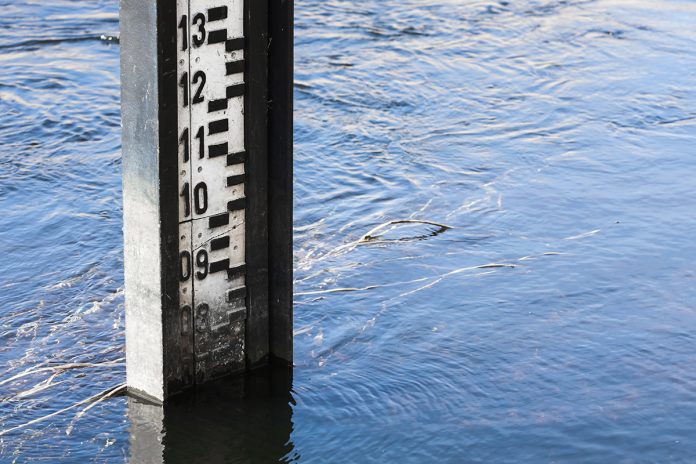Urban transformation and the relevance of critical infrastructure is placed under the spotlight here by Prof Dr Daniela Jacob at Climate Service Centre Germany (GERICS)
The IPCC special report “Global Warming of 1.5°C” has shown that a warming of 1.5°C compared to pre-industrial levels will lead to strong impacts of climate change. The regional economic damage by 2100 will be higher if global warming exceeds 1.5ºC and reaches 2ºC. In turn, all emission paths for the target of 1.5°C require rapid and far-reaching emission reductions and system transitions in many socially and economically significant areas, exhibiting synergies with the goals for sustainable development of the United Nations (SDGs).
Therefore, cities and urban areas are one of the critical global systems that can accelerate and upscale climate action. This requires a fundamental transformation of central supply infrastructures in urban areas, as well as an improved understanding and comprehensive consideration of the interactions of these critical infrastructures under changing climatic conditions and the interaction of cities and their surroundings.
Critical infrastructures are defined as organisations and facilities of great importance to the state. Their failure or impairment would result in serious supply shortages, considerable disruption of public safety, or other dramatic consequences. The following sectors are among the most prominent parts of critical infrastructures: i) transportation (aviation, inland and ocean shipping, rail and road transport, logistics), ii) energy (electricity, oil, gas), iii) water (public water supply, public waste water management) und iv) information technology and telecommunication.
Furthermore, interactions between critical infrastructure elements have become a growing phenomenon in practise. Therefore, the main types of failures describing the interdependencies of critical infrastructure are i) cascading (manifestation of nth-order-effects), ii) escalating (disruption in one infrastructure causes a larger disruption for another infrastructure) and iii) common cause (disruption in several infrastructures at the same time, e.g. due to geographical interdependencies). In particular, a cascading effect occurs when a disruption in one infrastructure causes the failure of a component in a second infrastructure, which subsequently causes a disruption in the second infrastructure.
In general, critical infrastructure is exposed to various kinds of threats. There are man-made or technical (terrorism, sabotage, software failures etc.) and natural threats. The latter differ from geological (mass movements, earthquakes etc.) to hydro-meteorological hazards (climate change impacts). The effect generates a sequence of events in human subsystems that result in physical, social and/or economic disruption. Thus, an initial impact can trigger other incidents that lead to consequences with significant magnitude.
For example, the relations and interactions between the water supply and energy sector shows how a malfunction within the energy supply chain – starting from power production over distribution and transformation stations to power lines – can affect water supply. Pumps, control elements, water treatment and digital communication do not work without electricity. Finally, this leads to a breakdown of the water works. The outage of the water supply in itself has significant impacts on other further public facilities such as health care. With respect to wastewater treatment, the lack of water supply initiates a second cascading step, because the malfunction of sewerage system elements – like sewerage treatment plants – has further impacts on other public facilities too.
In order to reduce these vulnerabilities in the context of climate change, cities need to focus more on the whole system, including the complex interactions between non-climatic and climatic drivers, as well as all critical infrastructure elements and the relevance of the surrounding area. The transformation of supply infrastructures – which is necessary for successful climate mitigation and a sustainable societal transformation – should therefore also be used for the long-term adaptation of critical infrastructure to climate change.
The important role of both climate change mitigation and adaptation is also highlighted in the Global Risk Report 2018, in which the risk categories “extreme weather events”, “natural disasters” and “failure of climate change mitigation and adaptation” are among the “top 5” in terms of likelihood and impact. Furthermore, it is highlighted that one of the major challenges is dealing with complex risks in systems characterized by feedback loops and tipping points.
Limiting global warming to 1.5°C compared to pre-industrial levels requires immediate action within and across sectors, as well as multilevel governance. Hence, successful city-level climate action urgently needs to take the next step from integrating strategies – often already in place worldwide – into robust climate action within the next two decades. Therefore, decision-makers in cities and urban areas are key and need strong political leadership.
Furthermore, increasing a cities’ resilience to climate change impacts is highly context-specific due to its geographical location, structure, institutions, inhabitants, available information and operational capability. As different infrastructure networks also become more interdependent, there is a growing – and currently often still underrated – scope for systemic failures to cascade across different networks and affect society in multiple ways. Therefore, there is a strong need to better understand risks and resilience jointly by focussing on systemic risks regarding critical infrastructure and cascading effects.
Further reading: Adaptation in cities – The art of lateral thinking
Please note: This is a commercial profile
Prof Dr Daniela Jacob
Climate Service Centre Germany (GERICS)
daniela.jacob@hzg.de
www.climate-service-center.de
Editor's Recommended Articles
-
Must Read >> Delivering climate information for the regions
-
Must Read >> Climate services – shaping a growing market





























